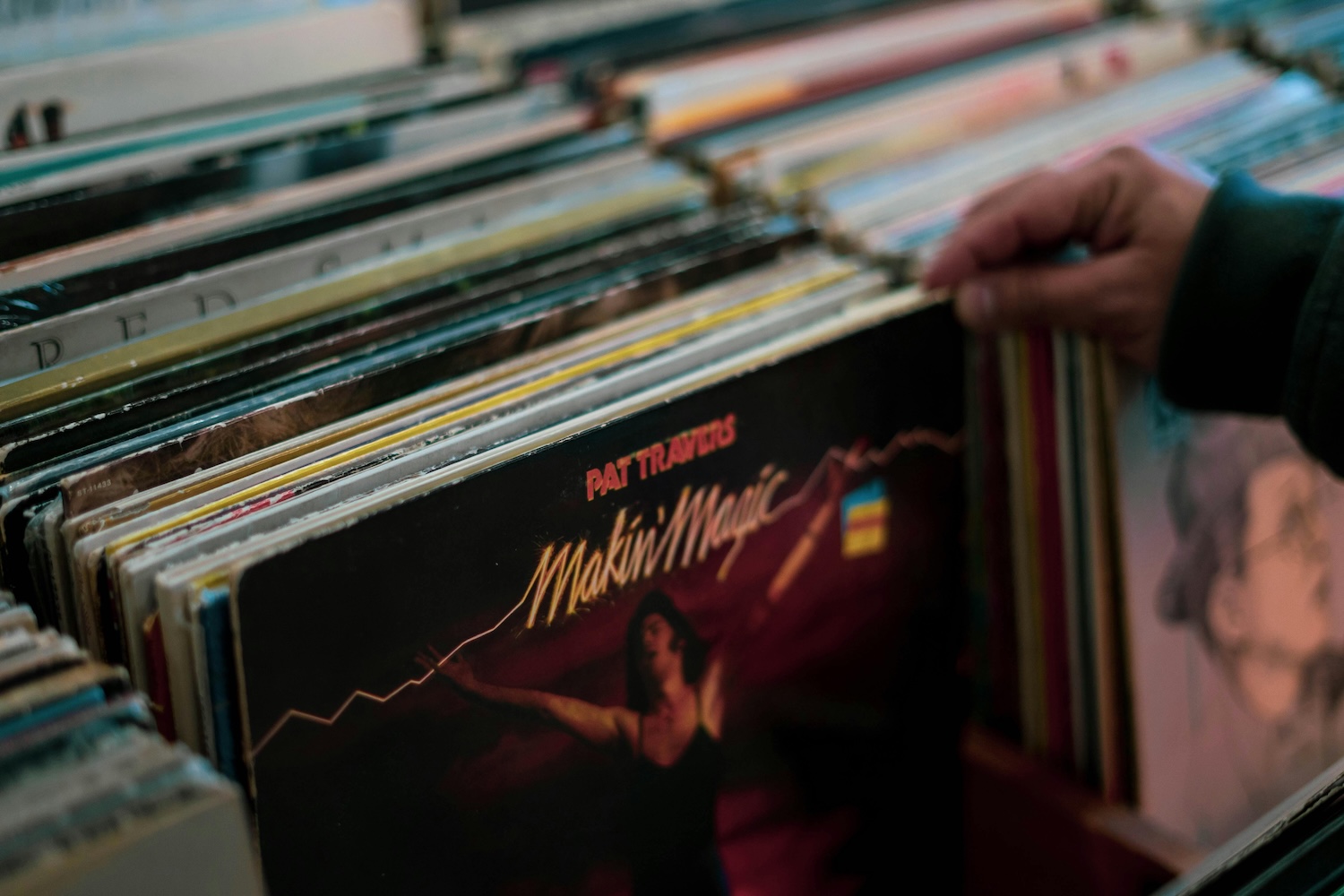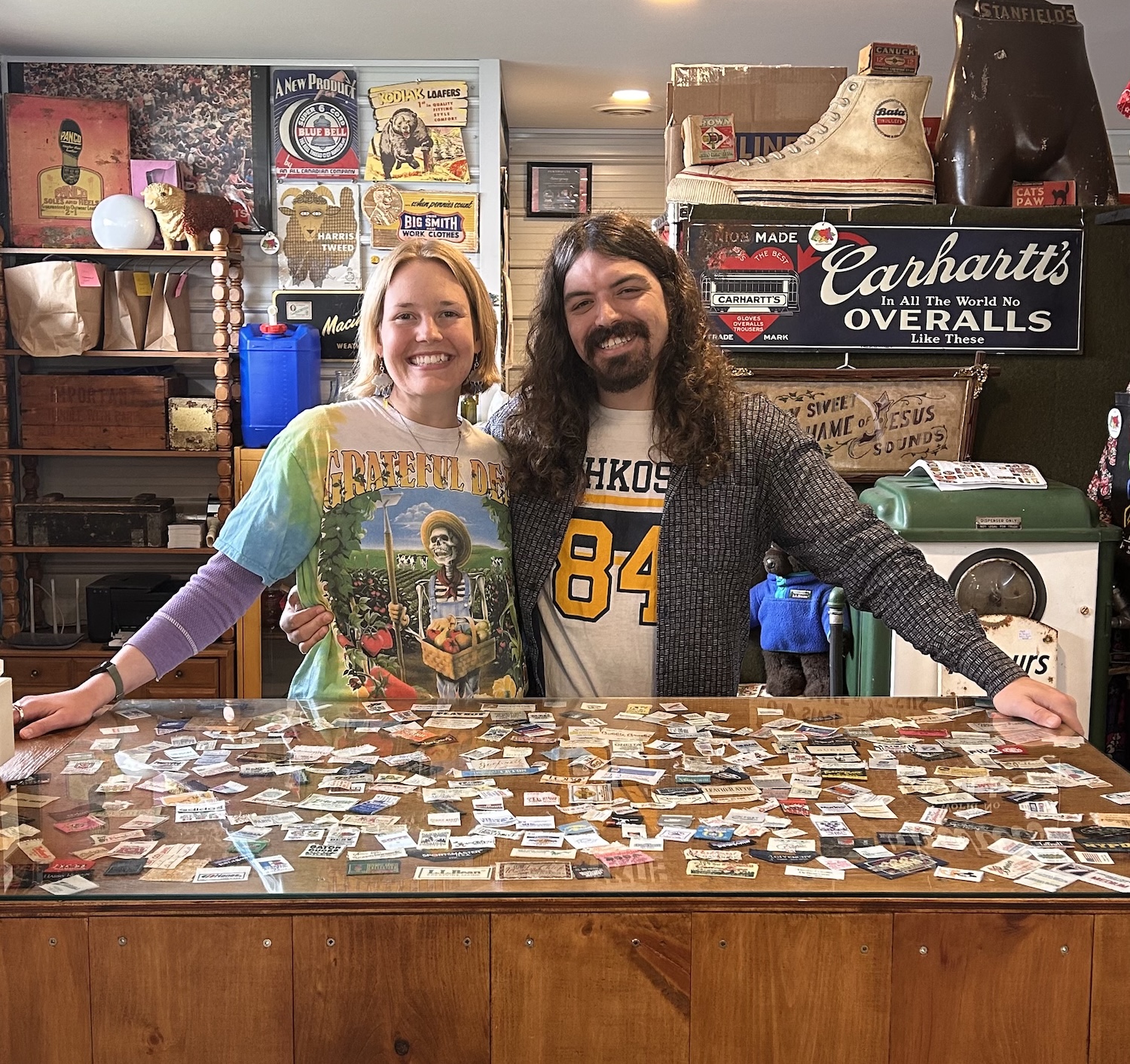
Shop like a pro: Vintage buying tips
Arm yourself with knowledge and patience when shopping vintage
Call them our ten commandments, lessons learned, mistakes we made so you don’t have to — here are some dos and don’ts for vintage sellers and shoppers.
We consulted with some of the sellers already featured on the site, polled our community on Instagram and dug deep into our personal repertoire to come up with this list. Have a tip to share? Let us know in the comments!
1. Do your research.
Whether you are selling or buying, research helps you to understand the value of an item. Know that rarity, age, provenance and condition will affect the price.
You’ll come to know if you are getting good quality for your money, or, on the flip side, if you are paying too much for an item. As one seller on Instagram advised, bidding too high at auction can be a common mistake.
Examine products for a maker’s mark or stamp, or tags on clothing that might show you who manufactured the item and where it came from.
Keep an eye on your Instagram feed and pay attention to prices when you’re out shopping at vintage stores and flea markets. Check our list of buying and selling resources for some places to do price comparisons. On eBay, you can filter items by what transactions have already been completed, meaning you can see how much something has sold for.
When it comes to research, the onus is really on the buyer. Many sellers know what they are selling, but some don’t. “Don't necessarily take the word of the shop owner,” says Niyousha Nejatpour, owner of Haul of Me Shop. “They might not know. They might be making their best guess, or the person they bought it from told them what it is.”
2. Don’t forget to measure.
This is especially important when shopping online. Photos can be deceiving, and it’s easy to get caught up in the excitement of a story sale, collection drop or Facebook Marketplace–refreshing session. Items can be sold quickly in these situations, so it’s best to have a good idea of your measurements ahead of time, or to pause for a second while you go check.
“With vintage clothing, the sizing is not the same as modern-day sizing. Vintage size 16 is probably a size eight to 10,” advises Wendy Kennedy, owner of Millie’s Modern Vintage.
She suggests using the measurements a seller provides online to compare to something that’s in your personal collection. “It takes work to go to your closet and get that measuring tape out and cross-reference,” she says. “But always, always measure.”
Personally, I keep a small measuring tape in my purse at all times and a list of relevant measurements for my living spaces and my wardrobe in a note on my phone. You just never know what you will find when you are out and about!
3. Do inspect for damage.
Some damage is fixable! Many sellers go to a lot of work to repair an item before they put it for sale, which saves you time and trouble. But if you’re not able to restore a piece yourself, that’s something to be mindful of. You need to know what you are getting into before you buy.
A few people we polled mentioned how easy it is to get swept up in the thrill of the hunt and accidentally overlook flaws that you might not be willing to live with, or that might compromise the integrity of the item.
If you don’t know a seller and they tell you something is in excellent condition, be wary of that, too. Ask for extra photos if there are only one or two available, or if parts of the item are not clearly shown. Reputable sellers will be up front with you if there are noticeable flaws, and will often show photos of those flaws so you can decide for yourself.
Keep in mind that damage is different from normal wear and tear. When buying vintage, it’s important to remember that these pieces are generally old! This means they may be well loved. You need to expect and be okay with the odd mark, stain, scuff and dent. Some pieces will have more than others, and they’ll be priced accordingly. Often these imperfections are part of the charm.

4. Do remember that some things aren’t fixable.
There are many ways you can fix an item yourself, for example: repairing holes in garments, polishing brass, gluing broken pieces together, sanding and refinishing wood, replacing wobbly legs on furniture, etc. But sometimes, no amount of TLC is going to “fix” an item. Some things are beyond repair.
If there’s a noticeable stain in clothing that presumably has been washed countless times, or on furniture that has already been sanded, it’s unlikely you’re going to be able to get those marks out. You either have to be okay with something that isn’t fixable, think up a new way to wear or display the item, or pass on it altogether.
Odours are another thing to watch out for, and that’s harder to do when shopping online. One shopper told us their biggest mistake was “convincing myself that the musty smell would fade away.” Another said, “not asking if it came from a smoke-free home before pickup and payment.” If you are sensitive to smells, these things might be deal breakers.
5. Don’t be afraid to double-check.
As a shopper, determining the material of the item and figuring out what your maintenance plan will be should be part of the buying process. If you’re looking at vintage clothes, are they made from polyester or rayon or another fabric that requires special laundering?
You can hand wash a lot of things, but some items are strictly dry clean only if you want to preserve the life of the item (and we assume you do, because it’s vintage!). Make sure the item fits into your life and that you will use it well.
Regina Petate, owner of LuveWantShop, echoed Niyousha’s comments from above in a recent interview with The Vintage Seeker. “If I'm buying something from somebody else, I'll ask specific things that I know that are kind of problem spots,” she says. “And then when I go pick it up, I just do another once over. Always check.”
Continued below
Explore vintage events in your area
See our calendar
Continued from above
6. Don’t plan to “circle back.”
When asked about your biggest vintage shopping mistakes, one of our Instagram followers said, “Never leave a gem behind. It’ll never be there when you go back.” Sage advice.
If you love something and have no reservations — and you can afford it — close the deal. I was at a market a few years ago and saw a brass swan with the back hollowed out to reveal a pearly pink interior. It was lovely, but I already have a number of other bird pieces. So I thought, “Do I really need another? Let me do a quick lap around the other booths and if I’m still thinking about it, then maybe I’ll come back to pick it up.”
You know where this story is going. The swan had disappeared by the time I returned, which was probably only about 30 minutes later. I still think about that piece, because I have never seen another like it. I’ve seen plenty of plain brass swans, or even ones with iridescent white interiors. But never that pearly pink. She’s the one that got — er, flew — away.
7. Do know your limitations.
How are you going to get that item home with you? If you have a car, measure the interior before you buy. (Yes, this means before you drive two hours in each direction to pick up an etagere.)
If you don’t have a car, does the seller offer delivery? Is the item special enough to warrant renting one or splitting the cost with a friend who also needs to do some pickups?
Speaking of friends, enlist them to help you with pickups, or take them on shopping expeditions with you. “Buying something I thought I could lift myself but couldn’t” was the top regret of one of our followers.

8. Don’t forget to be judicious.
There are a lot of lovely things out there. Online shopping makes it so easy to buy with a few quick taps. But just because it’s vintage and you love vintage doesn’t mean it’s for you. Train yourself — what styles or colours tend to look good on you? One way to track your own personal style is to keep a Pinterest board or save photos on Instagram.
Once you have collected a variety of photos, you will probably notice themes that will tell you what you like. When you’re out vintage shopping, home in on those things, and bypass the rest.
One seller said one of her biggest regrets was “buying something I thought other people would like instead of buying it because I liked it.” Whether you’re a seller or shopper, make sure to only buy what you love.
9. Do make it a habit.
Vintage shops, thrift stores, online marketplaces, you name it — the inventory changes all the time. Daily, even. If you’re looking for something specific, get into the habit of checking back daily or weekly if possible.
This doggedness can really pay off, as there is a certain satisfaction when you finally find what you are looking for. Remember Rumi: “What you seek is seeking you.”
10. Do use your imagination.
Sometimes a vintage piece is calling out to be reworked, or used in a different way. Furniture can be painted (though if you are buying high-quality vintage wood, you may want to rethink that can of paint — it may devalue the piece), decor objects from eras past that may have just sat on a shelf can be used as planters or catchalls, dresses can be hemmed, jackets can become vests, the list goes on.
If you don’t sew, find a good tailor who can help you make major changes, or who can guide you on what to look for if a garment has room to be let out.
Pay attention to how sellers are styling their items, and try out different looks with the pieces you have at home. Then seek to your heart’s content.
What are your vintage buying and selling dos and don’ts? Let us know in the comments!
Thank you for valuing our work!
Support our work to see this page.
You’ve got a good eye, but this gem is only available for members. Register for a plan or upgrade your current one to peek behind this vintage curtain, or log in below.















